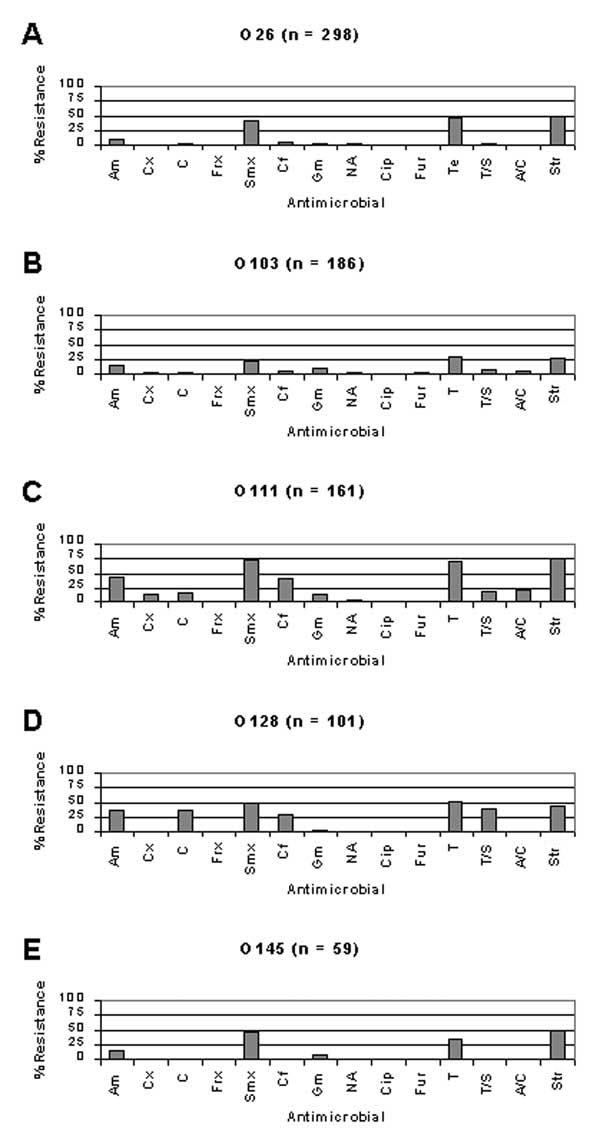Volume 8, Number 12—December 2002
Research
Antimicrobial Resistance of Escherichia coli O26, O103, O111, O128, and O145 from Animals and Humans
Figure 2

Figure 2. . Comparison of antimicrobial resistance frequencies between Shiga toxin–producing Escherichia coli (STEC) and other E. coli. Of isolates from cattle, resistance frequencies were similar between STEC and other E. coli (A). In contrast, of isolates from humans, resistance frequencies were generally lower for STEC compared with other E. coli (B). Am, ampicillin; Cx, cefoxitin; C, chloramphenicol; Frx, ceftriaxone; Smx, sulfamethoxazole; Cf, cephalothin; Gm, gentamicin; NA, nalidixic acid; Cip, ciprofloxacin; Fur, ceftiofur; Te, tetracycline; T/S, trimethoprim-sulfamethoxazole; A/C, amoxicillin-clavulanic acid; Str, streptomycin.
Page created: April 20, 2012
Page updated: April 20, 2012
Page reviewed: April 20, 2012
The conclusions, findings, and opinions expressed by authors contributing to this journal do not necessarily reflect the official position of the U.S. Department of Health and Human Services, the Public Health Service, the Centers for Disease Control and Prevention, or the authors' affiliated institutions. Use of trade names is for identification only and does not imply endorsement by any of the groups named above.